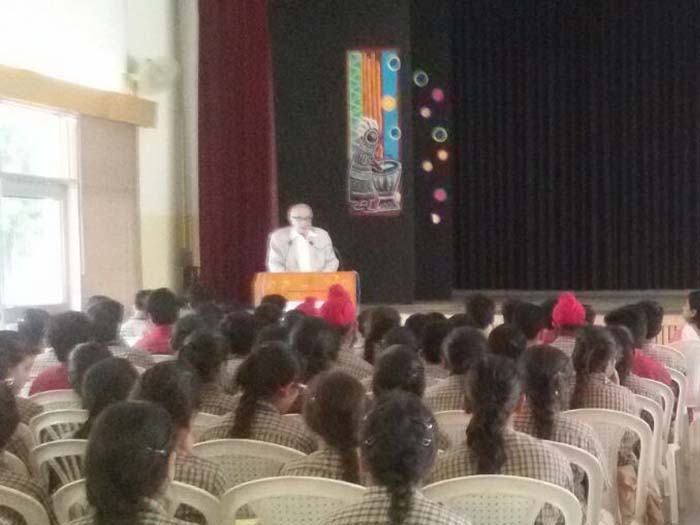Alexander Hamilton, Federalist No. 33, January 3, 1788.
If the federal government should overpass the just bounds of its authority and make tyrannical use of its powers, the people, whose creature it is, must appeal to the standard they have formed, and take such measures to redress the injury done to the constitution as the exigency may suggest and prudence justify.
Alexander Hamilton, Federalist No. 33, January 3, 1788.
On 27th April 2016, the students of class X engaged in an animated interaction with Chairman, Mr. Prafull Goradia, on the topic Federalism in India.
According to the dictionary, federalism is the division of powers between the different levels of the government. In India, there are two levels of government; one at the state level and the other at the central level.
Mr. Goradia told the students that India is not a true federal country, but a quasi-federal one. According to him, in a true federal country, the state government has absolute autonomy in deciding the laws applicable to the state and the people residing within it, whereas in a quasi - federal structure, states have to abide by the laws set by the central government. The state government cannot make laws pertaining to matters which already have a central law. The central government can also give directions to the states and the states are bound to adhere to them.
Mr. Goradia stated that in a true federal country, there is an equal representation of all the states in the upper house of the legislature. However, in our Upper House or the Rajya Sabha, the states do not have equal representation. He explained that the more populous states had a greater number of representatives than the less populous ones. As an example, the maximum seats belong to Uttar Pradesh as it has the highest population.
[gallery link="file" columns="2"]
Mr. Goradia further added that, in a federal structure, duties are distributed between the levels. The list of duties of the central government is known as the Union List and those that are of the state government make up the State List. There is another list of duties too, namely that, which comes under both the central and state governments. This is known as the Concurrent List. Mr. Goradia cited several examples of the duties that appear in the various lists.
The students were also offered an analytical view of the existing political system in India and attention was drawn to areas where we were lacking. Mr. Goradia provided an interesting comparison between the political systems of India, the USA and Belgium. According to him, the constitution of the USA has incorporated only 33 amendments since its adoption in July 1776. Similarly, in Belgium only 29 amendments have been effected in its constitution since independence in 1830. However, in the constitution of India there have been at least 100 amendments since Indias independence in August 1947! India has the lengthiest constitution too amongst these countries and the largest number of disputes with regard to it!
Mr. Goradia concluded the session by asking the students to read up and find more areas where the Indian federal structure remained underdeveloped. He also suggested that the children could attempt to re-draft the broad features of our constitution accommodating the deficiencies that exist.
ONKAR MEHRA (X-C).













